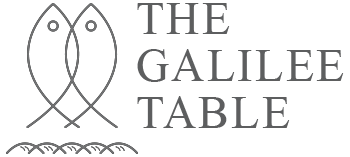The place I call home is Rameh, an ancient Galilean town shared today by Christians from three denominations, Muslims and Druze. Every morning I make the same half-hour drive to work by way of the Al Shaghur Valley that divides the Lower and Upper Galilee. The road takes me through landscape that hasn’t changed much since Biblical times: first majestic olive groves, the pride and joy of my hometown, followed by rolling hills densely covered with gorgeous Mediterranean woodland. In winter and spring, the slopes are colored every shade of green and speckled with flowers; come summer the green gives way to yellow and brown dotted with perennial shrubs. I drive east, descend through the valley, turn south, and about 15 minutes into the drive get my first glimpse of the Sea of the Galilee – a sparkling blue eye surrounded on all sides by cinnamon-hued mountains. I have experienced this moment countless times, but my heart still skips a beat. The name Sea of Galilee is of course misleading. This is in fact a freshwater lake and quite small as famous lakes go, but what it lacks in size it compensates for in natural beauty and spiritual significance. On most days, I drive straight to the shore, where our two family restaurants are situated, next to the ruins of Biblical Magdala, the birthplace of Mary Magdalene.
I N T R O D U C T I O N
But every now and then, I change the route and drive north along the lakeshore towards the ancient ruins of Capernaum, the town where Jesus spent three seminal years of His short life on Earth. I drive past the impressive Franciscan part of the site and on to the Greek Orthodox Church of the Twelve Apostles. Located at the eastern edge of Capernaum, this charming white church topped with magenta domes and surrounded by a sprawling garden has a special place in my heart. My children were baptized here in the waters of the lake, and Father Irinarchos, who practically singlehanded oversees this magnificent place, is my friend and mentor. I spend some time in the serene church, meditating and thinking about the week ahead. If Father Irinarchos has time, we chat for a while in the shade of a huge mulberry tree or drink coffee at a stone table facing the lake.
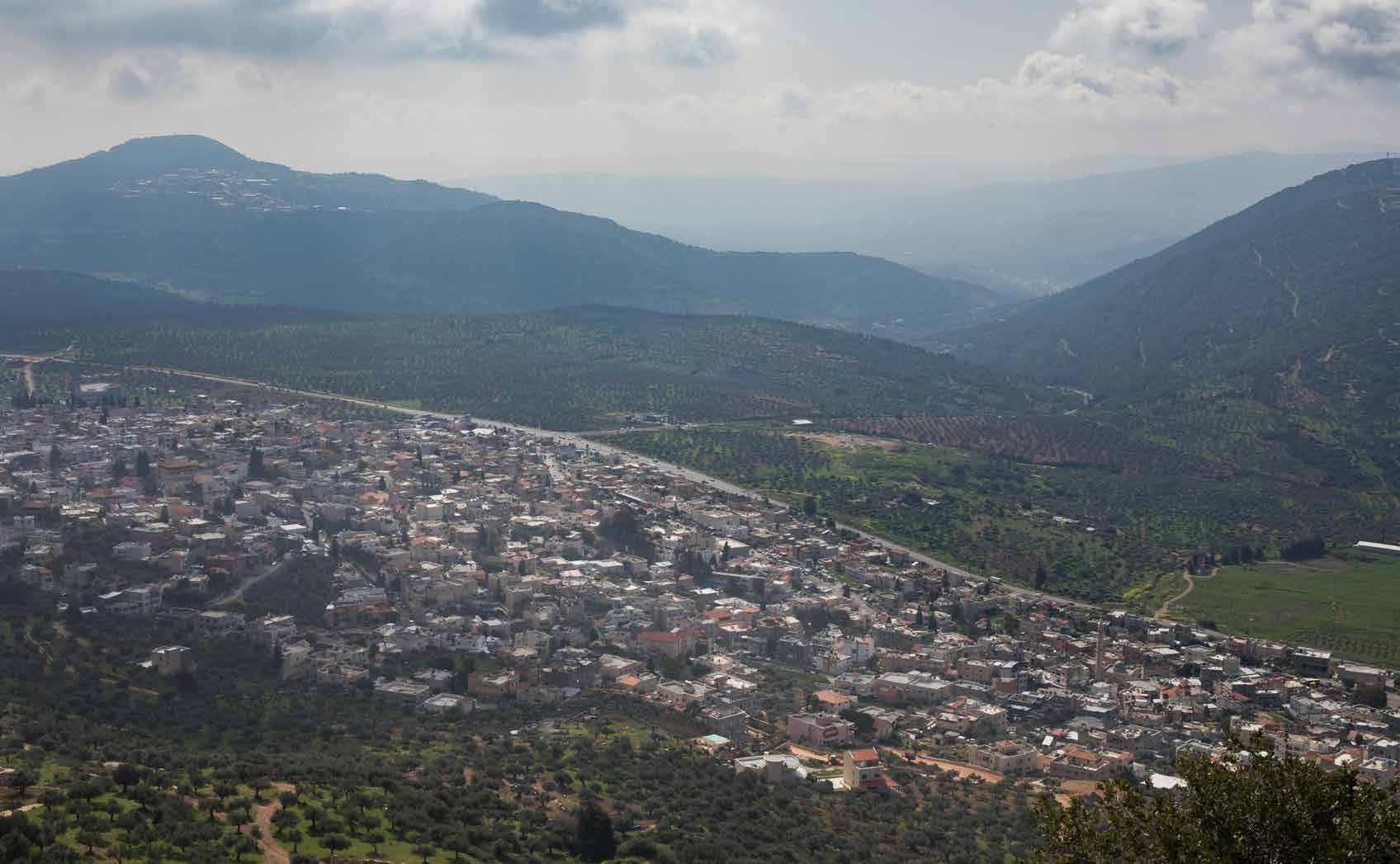
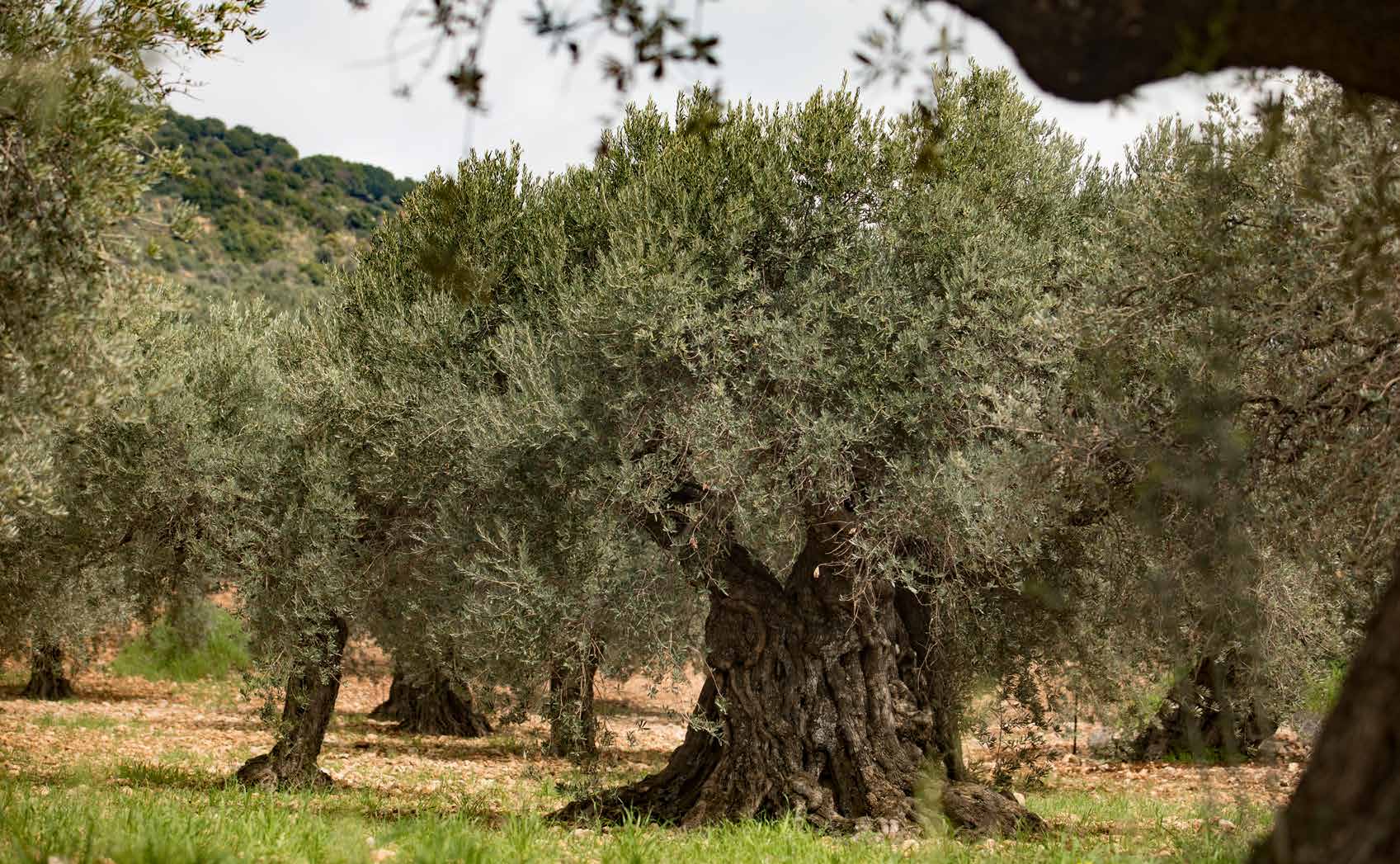
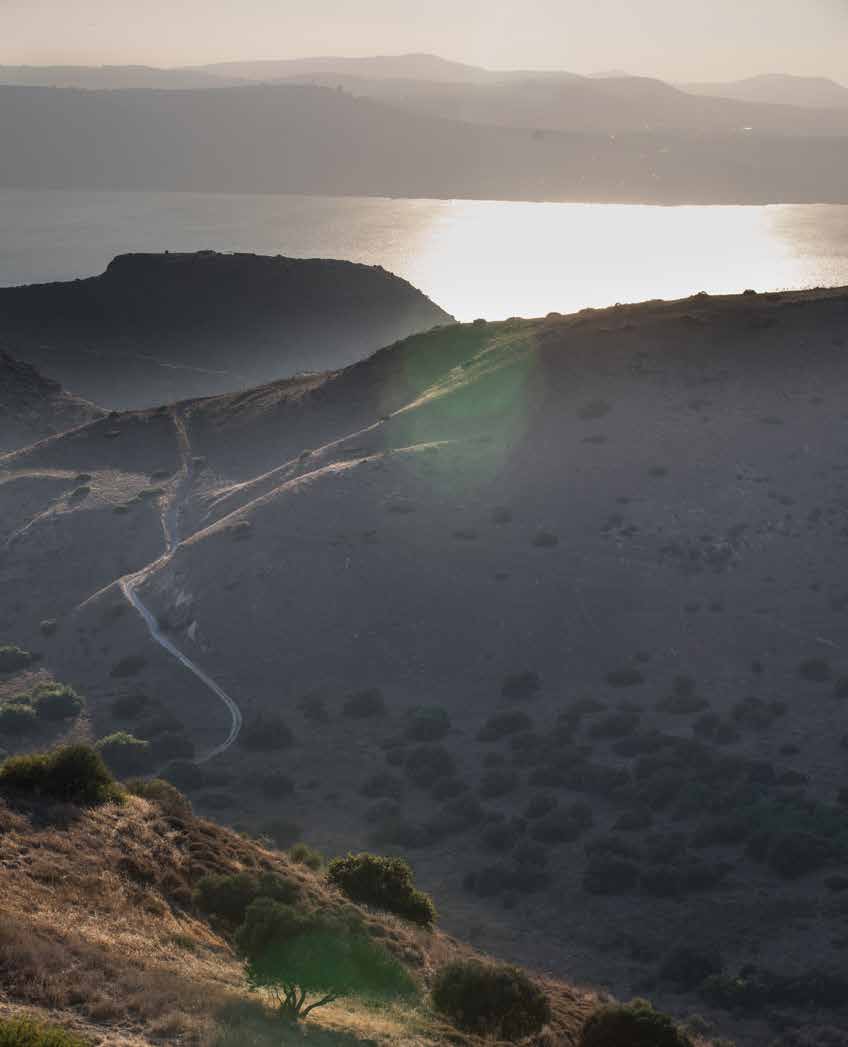
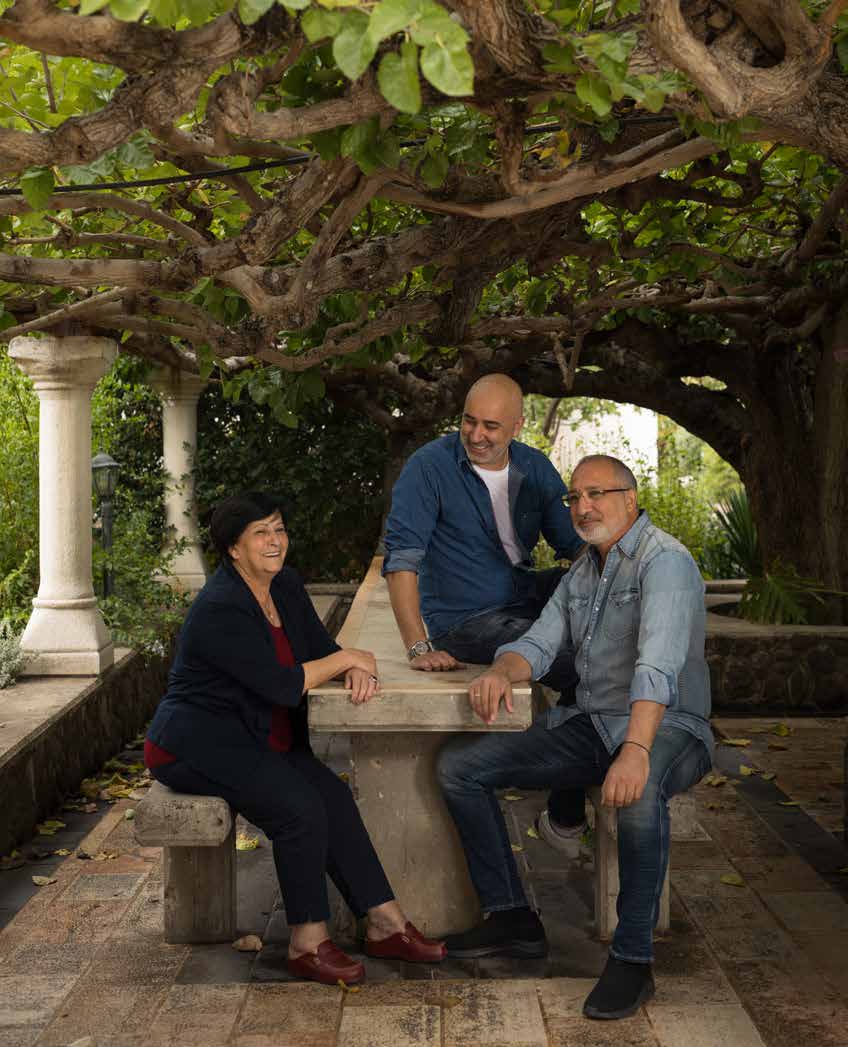
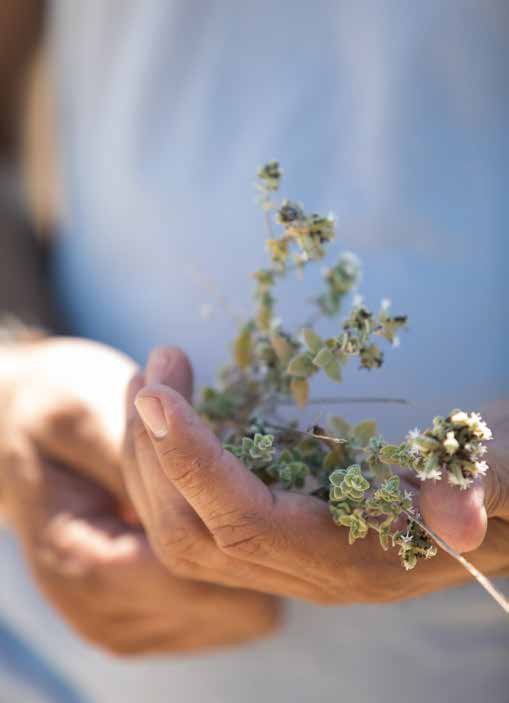
My life and the lives of my family are inextricably linked with the Sea of Galilee. My mother, Monira, is from Tarshicha in the Western Galilee, and my late father, Elias, is from Rameh, but they met and fell in love at a youth hostel by the lake where they worked in the late 1960s. The site of the hostel, which currently houses a German Catholic pilgrim guesthouse, is a stone’s throw from Tabgha, where Jesus fed the multitudes with five loaves and two fishes. After my parents married, they moved to the southern tip of the lake, near the Jordan Valley, where they ran another youth hostel. My late paternal uncle was a farmer who worked the fields bordering the Church of the Beatitudes. Located on a hill overlooking the Sea of Galilee, this is where Jesus delivered His famed Sermon on the Mount. Spending time in my uncle’s home, walking down the hill to the lake to fish and swim are the stuff of my childhood memories.
Cooking and sharing meals with friends and neighbors has always been an important part of our family life. My mother is a superb cook, and when my parents opened a banquet hall with catering in Rameh, she found herself in the kitchen, working with the cooks and teaching them to make traditional Galilean dishes “her way”. To this day, her fresh, bright style of cooking is my inspiration and benchmark of quality.
Together with Hani and Linda, my older brother and sister, we started helping with the family business while still in high school, but never thought about it as a career. Hani studied engineering, Linda became a kindergarten teacher, and I graduated from a college of architecture.
But eventually the passion for food and hospitality won over. After changing several locations, we opened a pair of restaurants by the Sea of Galilee: the traditional, down-to-earth Tanureen, and its younger sister – the creative and elegant Magdalena. In both restaurants, I work shoulder to shoulder with Hani, my brother and best friend. We complement each other in so many ways, and our partnership, based on trust and mutual respect, is the secret ingredient in the success of our family business. Throughout its history, the Sea of Galilee has been a lively region shared by diverse ethnic communities, and we cherish the fact that our restaurants continue this age-old tradition and make people of different faiths – Jews, Muslims and Christians – feel welcome. A significant number of our guests are Christian pilgrims. They come from all over the world, pray in different languages and adhere to different customs, but all have a common purpose: to experience this unique corner of the world where Our Lord lived, taught and transformed human souls. We are gratified that a meal in our restaurants offers not only good hearty food and an enjoyable pastime, but also contributes to their spiritual journey.
This book took shape over a long period of time. My dream was to bring together the beauty of traditional Galilean gastronomy, deeply rooted in local terroir, and the spirit of the land where Jesus walked. Since I am neither a scholar of religion nor a historian, but a man who lives to cook and feed, I chose to do so through personal and family experiences. As you read the book, and cook from it, I hope you will connect to the rhythm of the seasons in this blessed and fertile land, partake of the joyous festive meals and wholesome everyday fare, learn about unique ingredients and local traditions, and most of all feel the magic of Galilee, my Holy Land.
